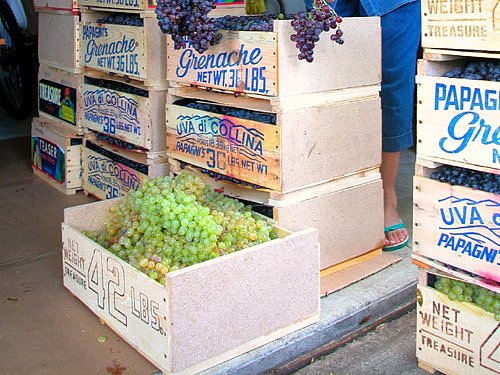
OK, so you know how sometimes you find a new love, maybe you start playing tennis on a given weekend in the Spring and have a realization about how invigorating it feels to drive a crisp forehand over the net or maybe, on a whim, you decide to try the local Sushi place and realize how nice raw salmon tastes with a bit of soy sauce? Well, that level of enjoyment, across a wide variety of experiences, is just how far most folks go with a given hobby or interest (and for most things that’s far enough); but what about a topic or interest like wine? Should you, as a casual drinker, merely “play” on the periphery or should you really dive in and become a pro? Hence our Wine Basics: Introduction to Wine Appreciation article.
Wine, I will argue, should not just be a weekend hobby or “corner store” type of thing (don’t settle for that smelly shop around the block from you that happens to sell beer, wine, and peanuts). Wine deserves more of your attention and more of your brain’s processing time! For example, let’s just take how wine experts “taste” wine. The wine expert usually assesses a wine on a couple of different fronts, beginning with:
- Color
- Aroma
- Taste
- Mouth Feel
On the taste front, the expert assesses what’s happening in his or her mouth across three different ranges
- Attack
- Mid palette
- Finish
If you’ve seen Sideways, for example, you know that Paul Giamatti is a lover of Pinot Noir because a good example of the varietal has a very long finish (the range that most wine drinkers appreciate most – it’s the last thing that happens in your mouth, after all).
Lately, I’ve been drinking lots of wine from the Mendoza Region of Argentina called Malbec. Many “wine experts” believe Malbec has a weak finish and a strong mid palette and they are probably correct, however some experts use the way the wine behaves in the mouth (especially at the end of the tasting) to downgrade a wine. I don’t think this should be the case, after all you wouldn’t judge a man’s outfit simply via the tie he is wearing, you would probably have a look at his shoes, touch the fabric, and maybe even look at the quality of his dress shirt. So, the same should hold true for a wine, in turn here are some wine tasting tips:
- Taste the whole wine before making a judgment
- Don’t just be influenced by the “attack” and “finish” stages, think about: Beginning, Mid, and Finish
- Remember, it’s not just about taste, swirl your glass to get the aromas going and take short, quick sniffs of the wine (a long sniff is going to quickly die out, so keep that glass swirling and take many short sniffs). What do you smell?
- Use your memory when you smell and think of things in past that smell like the wine(don’t say cherry, tobacco, lemon zest); be more creative and honest, what do you really smell, if you don’t smell anything that’s ok, as you taste and smell more wine you’ll begin to notice the subtleties).
- Forget about “mouth feel” and “color” when you’ve just started to take wine seriously.
So, drink what you like but take risks and experiment with different wine regions and price points.
Additional Wine Basic Resources:
Wine Spectator: Wine Basics
Wine Tasting Basic Training
New To Wine – Video Overviews


Guide to Antipasto: Italian Appetizers that Come Before the Meal
(photo: varied olives and cheeses) What is Antipasto and What Does it Include?Antipasto literally means “before the meal” and varies from province to province in Italy. Similar to French hors d’oeuvres or Spanish tapas, antipasto is a combin…
Food Guide to an Italian Christmas
(photo: Florence during the Christmas holiday. Image courtesy of Firenzeviva.com)At this point in the holiday frenzy, you’re either preparing to host a holiday party or you’ve been invited to a Christmas Eve / Day dinner or party. If you’v…